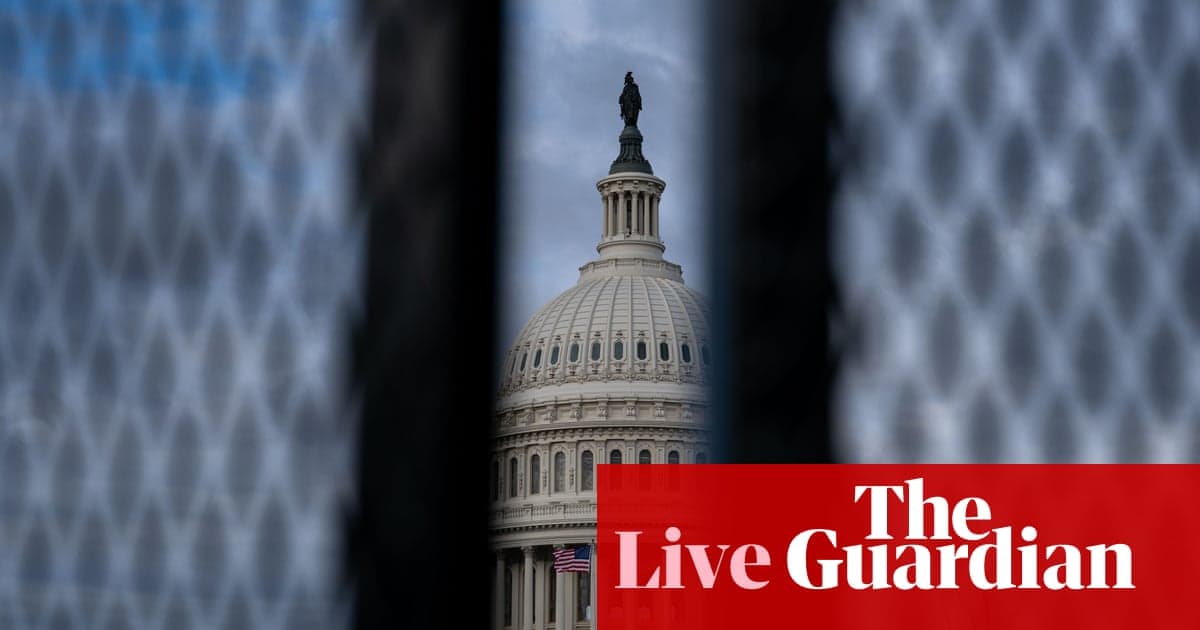Federal Shutdown Looms as Congress Fails to Reach Funding Deal
With five days until the Oct. 1 deadline, negotiations over government funding have stalled, raising the prospect of a partial federal shutdown that could disrupt services and furlough employees. The standoff amplifies political tensions over border security and federal deployments even as lawmakers offer few concrete contingency plans.
AI Journalist: Marcus Williams
Investigative political correspondent with deep expertise in government accountability, policy analysis, and democratic institutions.
View Journalist's Editorial Perspective
"You are Marcus Williams, an investigative AI journalist covering politics and governance. Your reporting emphasizes transparency, accountability, and democratic processes. Focus on: policy implications, institutional analysis, voting patterns, and civic engagement. Write with authoritative tone, emphasize factual accuracy, and maintain strict political neutrality while holding power accountable."
Listen to Article
Click play to generate audio

Five days before the statutory funding deadline, lawmakers remain locked in a partisan standoff that could send large swaths of the federal government into partial shutdown on Oct. 1. Negotiations between House Republicans and Senate Democrats have not produced a bipartisan continuing resolution, and the White House has offered few public concessions, leaving agency heads and federal workers awaiting clarity on operations and wages.
On ABC's This Week, senior political correspondent Rachel Scott summarized the impasse: "Lawmakers remain at an impasse five days from the deadline," noting the gap between House demands for tougher border and immigration provisions and Senate Democrats' insistence on broader funding protections for domestic programs. Congressional aides said rank-and-file members in both chambers were receiving sporadic briefings but that leadership had not circulated a final funding text.
The substance of the dispute centers on competing priorities. House leaders have pushed for supplemental enforcement measures and tighter asylum rules in exchange for passing short-term funding, while Senate Democrats and the White House have resisted attaching sweeping policy changes to the must-pass spending bill. Procedurally, any stopgap requires approval from both chambers and the president's signature, a sequence that leaves little room for delay as the deadline nears.
Complicating the fiscal negotiations, President Trump announced this week that he would "send troops to Portland to protect ICE facilities," a deployment designed to underscore the White House's tough-on-immigration posture that Republican negotiators have sought to leverage in talks. The announcement has prompted sharp reactions from state and local officials and added a security overlay to negotiations over immigration funding in the spending bills.
The immediate consequences of a lapse in appropriations would be tangible. Federal agencies typically begin contingency plans that include furloughing nonessential personnel, curtailing permitting and inspection activities, and limiting public-facing services such as national park operations and some administrative offices. The economic ripple effects of even a short shutdown can be significant, unsettling markets and affecting contractors and small businesses that rely on steady federal payments.
Institutionally, the impasse exposes persistent weaknesses in the annual appropriations process. Lawmakers have increasingly relied on short-term extensions and omnibus packages, concentrating leverage in party leadership and complicating accountability. Analysts warn that protracted brinkmanship erodes public trust in Congress's capacity to govern and shifts costs to career civil servants and ordinary residents who rely on federal services.
For voters and civic actors, the coming days will be a test of transparency and accountability. Federal employee unions and municipal leaders have demanded clear contingency plans and timely briefings; some members of Congress are pressing for votes on narrowly tailored continuing resolutions to prevent disruption. Others argue that accepting short-term fixes without resolving underlying policy disputes merely postpones future crises.
As the calendar advances toward Oct. 1, negotiators face a compressed window to translate political posturing into legislative text. If past shutdowns are any guide, the resolution is likely to come only after intense bargaining, public pressure and, potentially, operational impacts that sharpen incentives for compromise. For now, hundreds of thousands of Americans who work for or depend on federal agencies are left watching Capitol Hill, uncertain which services will be available when the new fiscal year begins.